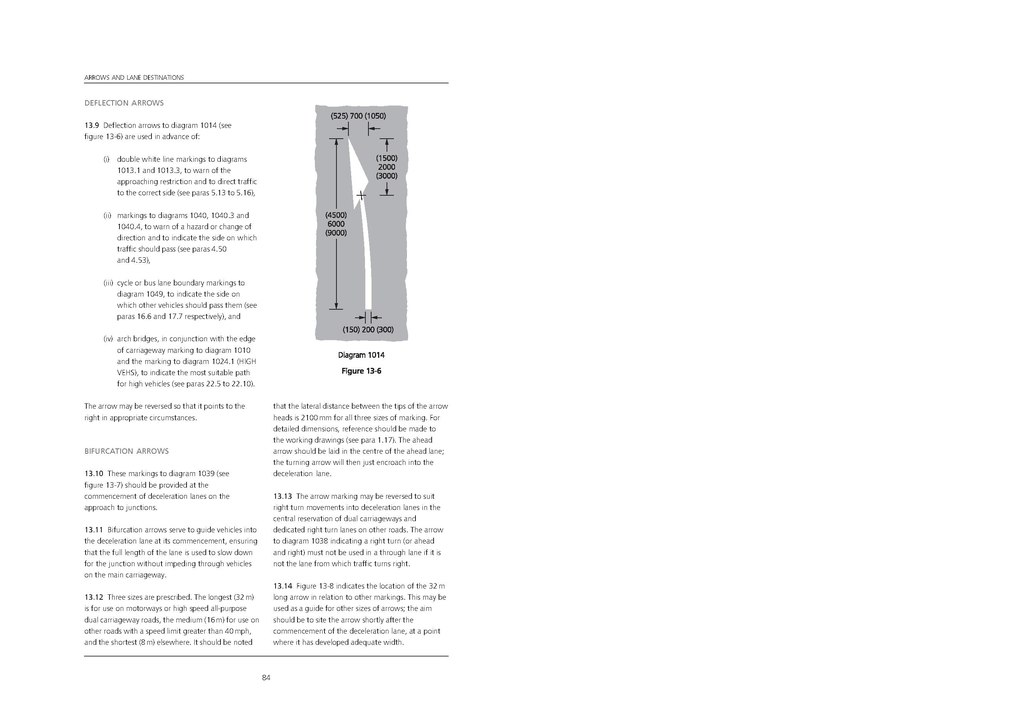
DEFLECTION ARROWS
13.9 Deflection arrows to diagram 1014 (see figure 13-6) are used in advance of:
(i) double white line markings to diagrams 1013.1 and 1013.3, to warn of the approaching restriction and to direct traffic to the correct side (see paras 5.13 to 5.16),
(ii) markings to diagrams 1040, 1040.3 and 1040.4, to warn of a hazard or change of direction and to indicate the side on which traffic should pass (see paras 4.50 and 4.53),
(iii) cycle or bus lane boundary markings to diagram 1049, to indicate the side on which other vehicles should pass them (see paras 16.6 and 17.7 respectively), and
(iv) arch bridges, in conjunction with the edge of carriageway marking to diagram 1010 and the marking to diagram 1024.1 (HIGH VEHS), to indicate the most suitable path for high vehicles (see paras 22.5 to 22.10).
The arrow may be reversed so that it points to the right in appropriate circumstances.
BIFURCATION ARROWS
13.10 These markings to diagram 1039 (see figure 13-7) should be provided at the commencement of deceleration lanes on the approach to junctions.
13.11 Bifurcation arrows serve to guide vehicles into the deceleration lane at its commencement, ensuring that the full length of the lane is used to slow down for the junction without impeding through vehicles on the main carriageway.
13.12 Three sizes are prescribed. The longest (32 m) is for use on motorways or high speed all-purpose dual carriageway roads, the medium (16 m) for use on other roads with a speed limit greater than 40 mph, and the shortest (8 m) elsewhere. It should be noted that the lateral distance between the tips of the arrow heads is 2100 mm for all three sizes of marking. For detailed dimensions, reference should be made to the working drawings (see para 1.17). The ahead arrow should be laid in the centre of the ahead lane; the turning arrow will then just encroach into the deceleration lane.
13.13 The arrow marking may be reversed to suit right turn movements into deceleration lanes in the central reservation of dual carriageways and dedicated right turn lanes on other roads. The arrow to diagram 1038 indicating a right turn (or ahead and right) must not be used in a through lane if it is not the lane from which traffic turns right.
13.14 Figure 13-8 indicates the location of the 32 m long arrow in relation to other markings. This may be used as a guide for other sizes of arrows; the aim should be to site the arrow shortly after the commencement of the deceleration lane, at a point where it has developed adequate width.
84
